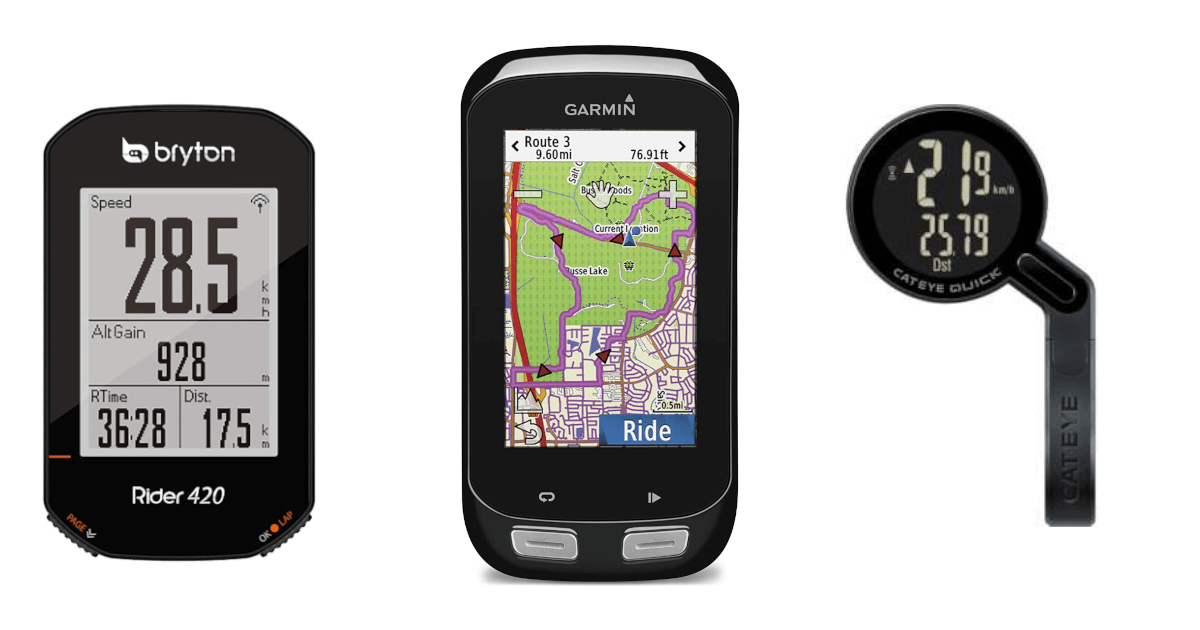Color Display vs Monochrome Display
Choose “Color” for Graphs and Map Navigation
Modern cycling computers offer features such as navigation with maps, and graphical displays of heart rate, power, and gradient data. These features are much easier to see on a color display compared to a monochrome one.
Especially for maps, a monochrome display tends to reduce everything to “just a collection of black lines.” While it’s still possible to follow a route, a quick glance during a ride makes color displays overwhelmingly easier to read.
Choose “Monochrome” for Better Battery Life
When using a cycling computer on long rides, battery life becomes the most important factor. Monochrome screens offer significantly better battery performance.
In daylight riding, color displays can reflect sunlight, making them hard to read unless the backlight is turned up. Increasing the backlight brightness, however, drains the battery faster.
Monochrome screens, on the other hand, are often designed to be readable even under bright sunlight, which eliminates the need for backlight during daytime rides and drastically conserves battery.
Large Screen vs Compact Screen
Go with a Large Screen to Display More Data
The primary purpose of a cycling computer is to monitor real-time data during rides. By tracking speed, cadence, heart rate, and other metrics, you can better understand your ride and physical condition.
With cycling computers:
- The number of displayable data fields
- The font size of each field
are heavily influenced by screen size. Larger screens can show more items and display them in larger, easier-to-read text.
Most modern cycling computers allow you to set up multiple pages of data fields. However, operating buttons while riding not only poses a safety risk but may also violate traffic regulations. Therefore, having all necessary data on a single screen is far more convenient while riding.
For this reason, if you want to see a lot of data during your ride, a large-screen cycling computer is the clear choice. Especially for riders who wear glasses and are nearsighted, small screens can make text even harder to read through lenses.
On the other hand, if you only care about speed and distance, a compact screen will be more than sufficient.
Choose a Compact Model If You Prioritize Weight
If you’re riding a lightweight road bike, even a few dozen extra grams might be a concern. In that case, a compact cycling computer is highly recommended.
Depending on the product, the battery is typically the heaviest component of a cycling computer. And the display is what consumes the most battery.
Larger screen models require more battery to power the bigger display, which naturally leads to larger battery capacity and therefore more weight. Some heavy models can weigh up to around 120g.
If weight is your priority, go for a 2.2-inch class model. These provide reasonably large displays while keeping the weight around 60g — about half the weight of large-screen models.
Other Display Factors to Consider
Display Resolution Matters Too
If you’re only using a basic cycling computer that displays numbers, resolution isn’t a major concern. However, for more advanced models with switchable screens and multiple display features, resolution becomes important.
Smaller screens often mean smaller text. If the display resolution is low, small text may appear blurry or pixelated, making it hard to read quickly while riding.
If You Wear Eyewear, Choose a Model with Clear Display
Many riders use sunglasses or other eyewear during daytime rides to protect against UV rays and wind. If this applies to you, it’s important to check how clearly the display appears through your eyewear.
Though it’s rare to find stores with cycling computer display units, some large sports bike retailers do carry them. If possible, test the models while wearing your usual eyewear to ensure readability.
